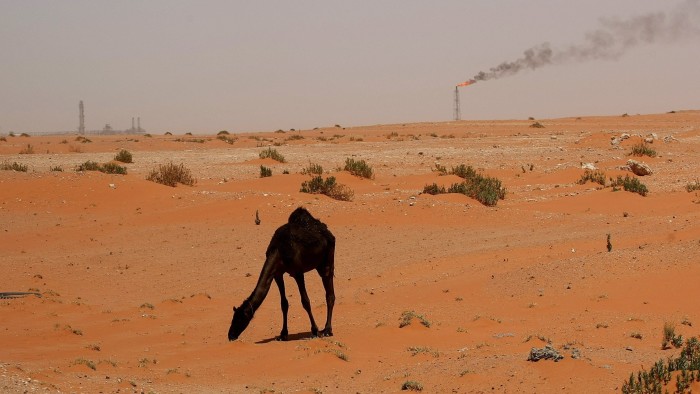Stay informed with free updates
Simply sign up to the Oil & Gas industry myFT Digest — delivered directly to your inbox.
Two of the Middle East’s largest oil companies are scaling back their multibillion-dollar acquisition sprees as expectations of a sustained drop in oil revenues curb their global dealmaking.
Saudi Aramco, the world’s number-one crude producer, and Abu Dhabi National Oil Company, known as Adnoc, have been the industry’s most active buyers over the past three years, announcing more than $60bn of acquisitions to expand into gas, chemicals and lubricants.
But advisers and people familiar with their thinking said the Gulf energy giants had now slowed their M&A activities to reassess, as the impact of lower oil prices starts to bite.
Benchmark crude prices have fallen from more than $80 a barrel in January to $67 this week, despite jumping during the recent conflict between Israel and Iran. Analysts expect oversupply in the market to put further pressure on prices.
Saudi Arabia has already said it would “take stock” of its spending as a result of lower crude prices, which have now fallen below break-even levels for some Gulf countries.
A senior energy banker said Saudi Aramco and Adnoc had been told by their government owners to “focus more on dividends and less on growth”.
Some deals were likely to continue, said the people close to the companies, particularly in gas, but not at the same pace. They also confirmed that neither company was bidding to buy Castrol, the lubricants business put up for sale by BP.
“In any uncertain environment, there’s a need to be more selective,” said one executive. Saudi Aramco’s net income moves by $900mn for every $1 change in the oil price.
Any pullback would ripple across the global energy M&A landscape, given the scale of the activity by the Gulf companies.
Saudi Aramco has announced at least $8bn of deals over the past three years, including a stake in Chinese petrochemicals company Rongsheng, the purchase of LNG business MidOcean, a deal for US lubricants brand Valvoline, and an investment in Horse Powertrain, a company that designs and builds internal combustion engines.
It said last month it was exploring whether to buy part of Woodside Energy’s Louisiana LNG project, and is considering how it can supply more LNG to India.
Amin Nasser, Saudi Aramco’s chief executive, responded to a recent question about how lower oil prices affected the company’s finances by saying he always looked “to improve efficiency in our spending”. But he also noted that Saudi Aramco’s financial strength enabled it “to invest counter-cyclically”.
Adnoc has been even more active and is working on transactions worth in excess of $52bn, according to Dealogic. These include a $18.7bn offer for Australian oil and gas producer Santos, a $15.5bn deal for German chemicals group Covestro and a deal to create a $60bn chemicals company called Borouge Group International in which it will have a 47 per cent stake.
To facilitate this, the Abu Dhabi company has built an “internal investment bank” and last year launched XRG, a platform for overseas acquisitions. In June, XRG declared an ambition to be a top-three chemicals groups and a top-five player in gas, saying it would begin work to achieve this “immediately”. It has also made investing in the US during Donald Trump’s second presidency a priority.
Recommended
One person familiar with Adnoc’s thinking noted that, within the scope of the ambitious targets, time would be needed to digest the deals it had announced and to integrate those businesses. The person also noted the difficulty of doing deals given the current uncertainty over oil prices.
A prominent energy lawyer compared the recent deal surge with the wave of acquisitions by state-owned Chinese companies between 2009-2013. Just like the Chinese then, Saudi Aramco and Adnoc wanted to take stock of their purchases.
“They don’t want to be seen as the dumb money,” the person said.
Adnoc and Saudi Aramco declined to comment.


